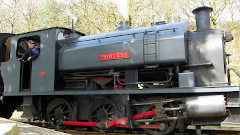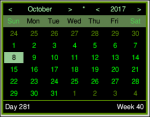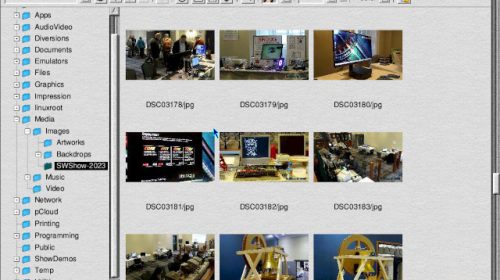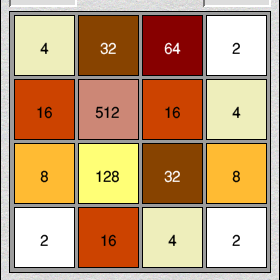Thomas Milius has produced an updated version of the EtherUSB module, which is used to drive ethernet devices that are connected via USB. The original version of the module was written by James Peacock, and since version 0.14 has been included as part of the normal RISC OS 5 distribution, with the sources maintained by RISC OS Open Ltd (ROOL).
Read MoreCategory: Software
TrainTimes 2.01 released
An update has been released by Kevin Wells for his application that helps RISC OS users look-up railway timetables and other related information. Called TrainTimes, the software acts as a go-between by using Wget to relay the users’ selections to a remote provider, Real Time Trains and National Rail depending on what is being looked up, and to receive the results of that. Those results are then processed and displayed by the application itself.
Read MoreMiniTime 1.11 released
Fred Graute has released a new version of MiniTime. The software displays a discreet window on the RISC OS screen with the date and time, and can be configured in various ways to make it useful yet unobtrusive.
Read MoreVKeyboard prodded, 1.09 appears
Kevin Wells’ application that allows a RISC OS computer to be used with a mouse but no keyboard has been updated. A small update to the software, 1.09 of Vkeyboard brings with it some configuration improvements, and a brand new icon.
Read MoreTextEase six pack hits (a) six
(Or the two or four pack, depending on which edition) A new version of TextEase is now available from Elesar Ltd. Originally from Softease and aimed at the award winning software consists of a suite of up to six applications, and is available from Elesar in either Home, Educational, or Professional editions – with the first containing two of the applications, the second a further two, and the last all six.
Read MoreCurrency 2.02 released
Kevin Wells has updated his application that allows RISC OS users to look up the currencies used by different countries, exchange rates between any two, and to convert between them, amongst a number of other options.
Read MoreCLFiler 1.35 released
The RISC OS filer, a key part of the RISC OS desktop environment is clean and simple, and does its job superbly – even though we use it whenever we use the RISC OS computer, we probably don’t give it that much thought; it’s just there, showing us our files, and providing a target to drop new ones into.
Read MoreArriving now: TrainTimes 2.00
Kevin Wells has released a new version of TrainTimes his application that makes it easy to check train timetables from the RISC OS desktop. A need to change the third party Application Programmer Interface (API) provider – the web-based resource used by the software to look up the information requested by the user – prompted Kevin to rewrite the application itself, leading to version 2.00.
Read MoreCherry Bomb release, and Code the Classics update
Over the last couple of weeks, there have been a small handful of announcements arrive at the RISCOSitory bunker that I’ve been unable to deal with immediately, instead putting them on hold. As such you’ll see a small clutch of posts appearing shortly – and this one is actually a combination of two announcements, both from the same source and covering the same subject matter in two parts.
Read More12MinsTo9 – simple maths and sliding tiles
A very simple game that’s been around for about a decade is 2048, a sliding tile game in which the goal is to slide all of the numbered tiles in one of four directions, in order to cause collisions between two tiles bearing the same number, at which point they combine to become the total of the two.
Read More






